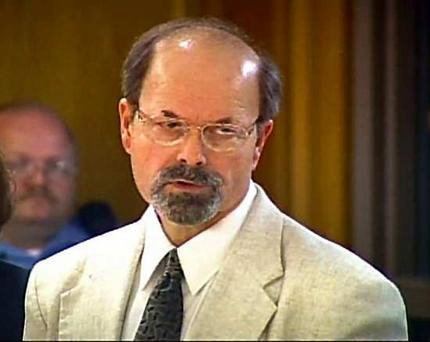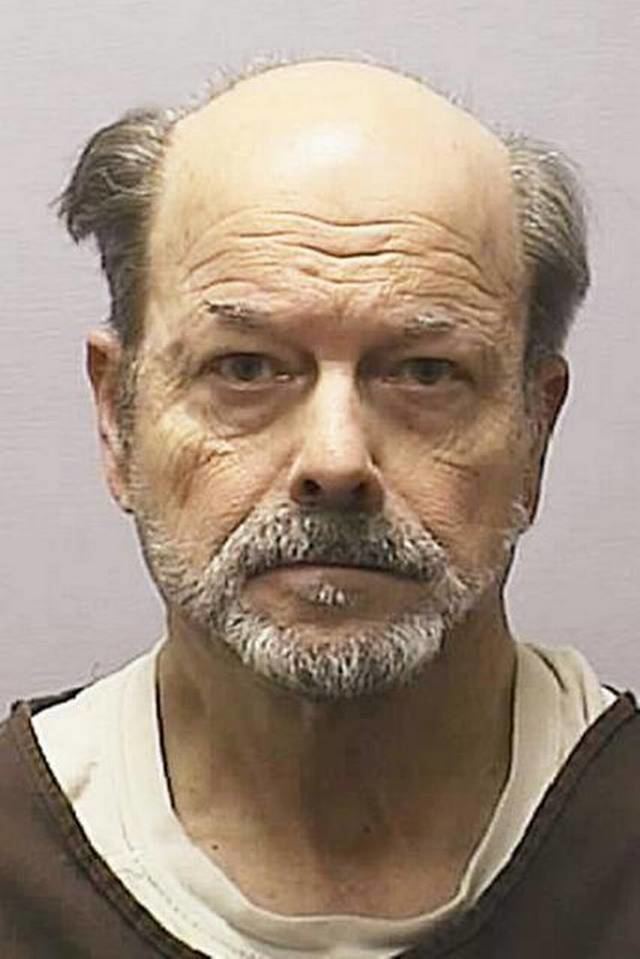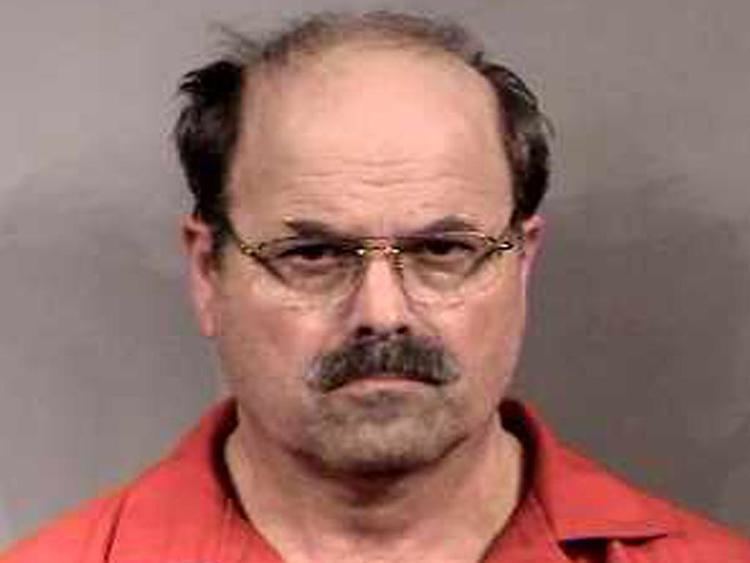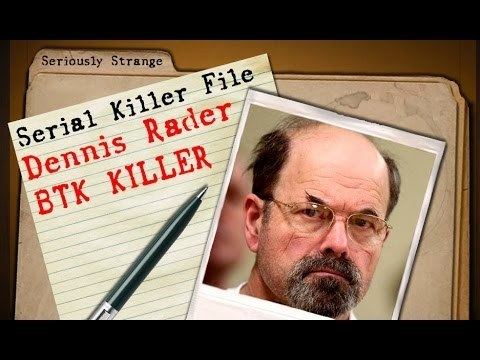Serial killers 23 25 dennis rader the btk killer
Dennis Lynn Rader (born March 9, 1945) is an American serial killer who murdered ten people in Sedgwick County, Kansas between 1974 and 1991.
Contents
- Serial killers 23 25 dennis rader the btk killer
- Dennis rader documentary part 1
- Early life and career
- Victims
- Case history
- Arrest
- Legal proceedings
- Further investigations
- Evaluation by Robert Mendoza
- Non fiction
- Literature
- Music
- References

He is also known as the BTK Killer or the BTK Strangler. "BTK" stands for "Bind, Torture, Kill", which was his infamous signature. He sent letters describing the details of the murders to police and local news outlets before his arrest. After a decade-long hiatus, Rader resumed sending letters in 2004, leading to his 2005 arrest and subsequent guilty plea. He is currently serving ten consecutive life sentences at El Dorado Correctional Facility in Kansas.

Dennis rader documentary part 1
Early life and career

Dennis Rader is the oldest of four sons born to Dorothea Mae Rader (née Cook) and William Elvin Rader. Though born in Pittsburg, Kansas, he grew up in Wichita. According to many reports, including his confessions, he tortured animals as a child. He also had a sexual fetish for women's underwear and stole underpants from his victims and wore them himself.

Rader spent 1966–1970 in the United States Air Force. Upon discharge, he moved to Park City, where he worked in the meat department of a Leekers IGA supermarket where his mother was a bookkeeper. He married Paula Dietz on May 22, 1971, and had two children. He attended Butler County Community College in El Dorado, earning an associate degree in electronics in 1973. He then enrolled at Wichita State University, and graduated in 1979 with a bachelor's in administration of justice.

Rader worked as an assembler for the Coleman Company, an outdoor supply company. He worked at the Wichita-based office of ADT Security Services from 1974 to 1988, where he installed security alarms as a part of his job, in many cases for homeowners concerned about the BTK killings. Rader was a census field operations supervisor for the Wichita area in 1989, before the 1990 federal census. He became a dogcatcher and compliance officer in Park City. In this position, neighbors recalled him as being sometimes overzealous and extremely strict. One neighbor complained he euthanized her dog for no reason.

On March 2, 2005, the Park City council terminated Rader's employment for failure to report to work or call in. He had been arrested for the murders five days earlier.

Rader was a member of Christ Lutheran Church and had been elected president of the church council. He was also a Cub Scout leader. On July 26, 2005, after Rader's arrest, his wife was granted an immediate divorce.
Victims
All of Rader's known crimes occurred in Kansas. He killed ten people in total and collected items from each murder scene. He also intended to kill others, notably Anna Williams, 63, who in 1979 escaped death by returning home much later than he expected. Rader explained during his confession that he became obsessed with Williams and was "absolutely livid" when she evaded him. He spent hours waiting at her home but became impatient and left when she did not return home from visiting friends. Two of the women Rader had stalked in the 1980s and one he had stalked in the mid-1990s filed restraining orders against him; one of them also moved away.
Rader admitted in his interrogation that he had been planning to kill again. He had set a date, October 2004, and was stalking his intended victim.
With the exception of Hedge and Davis, all victims' bodies were found on the date and at the location of death. Hedge was found eight days later on May 5, 1985, at East 53rd Street North between North Webb Road and North Greenwich Road in Wichita. Davis was found 13 days later on February 1, 1991, at West 117th Street North and North Meridian Street in Sedgwick.
Case history
Rader was particularly known for sending taunting letters to police and newspapers. He authored many communications from 1974 to 1979. The first was a letter that had been stashed inside an engineering book in the Wichita Public Library in October 1974 that described, in detail, the killing of the Otero family in January of that year. In early 1978, he sent another letter to television station KAKE in Wichita, claiming responsibility for the murders of the Oteros, Shirley Vian, Nancy Fox, and Kathryn Bright. He suggested many possible names for himself, including the one that stuck: BTK. He demanded media attention in this second letter, and it was finally announced that Wichita did indeed have a serial killer at large. A poem was enclosed titled "Oh! Death to Nancy," a parody of the lyrics to the American folk song "O Death."
In 1988, after the murders of three members of the Fager family in Wichita, a letter was received from someone claiming to be the BTK killer where he denied being the perpetrator of this crime. He credited the killer having done "admirable work." It was not proven until 2005 that this letter was in fact written by Rader, and he is not considered by police to have committed this crime.
By 2004, the investigation of the BTK Killer was cold. Then, Rader began a series of 11 communications to the local media that led directly to his arrest in February 2005. In March 2004, The Wichita Eagle received a letter from someone using the return address Bill Thomas Killman. The author of the letter claimed that he had murdered Vicki Wegerle on September 16, 1986, and enclosed photographs of the crime scene and a photocopy of her driver's license, which had been stolen at the time of the crime. Before this, it was not definitively established that Wegerle was killed by BTK. DNA collected from under Wegerle's fingernails provided police with previously unknown evidence. They then began DNA testing hundreds of men in an effort to find the serial killer. Altogether, over 1300 DNA samples were taken and later destroyed by court order.
In May 2004, a letter with chapter headings for the "BTK Story," fake IDs and a word puzzle were received by television station KAKE, in Wichita. On June 9, 2004, a package was found taped to a stop sign at the corner of First and Kansas in Wichita. It had graphic descriptions of the Otero murders and a sketch labeled "The Sexual Thrill Is My Bill." Also enclosed was a chapter list for a proposed book titled The BTK Story, which mimicked a story written in 1999 by Court TV crime writer David Lohr. Chapter One was titled "A Serial Killer Is Born." In July, a package was dropped into the return slot at the downtown public library containing more bizarre material, including the claim that he was responsible for the death of 19-year-old Jake Allen in Argonia, Kansas earlier that month. This claim was false, and the death was ruled a suicide. In October 2004, a manila envelope was dropped into a UPS box in Wichita. It had many cards with images of terror and bondage of children pasted on them, a poem threatening the life of lead investigator Lt. Ken Landwehr, and a false autobiography with many details about Rader's life. These details were later released to the public.
In December 2004, Wichita Police received another package from the BTK killer. This time, the package was found in Wichita's Murdock Park. It had the driver's license of Nancy Fox, which was noted as stolen from the crime scene, as well as a doll that was symbolically bound at the hands and feet, and had a plastic bag tied over its head.
In January 2005, Rader attempted to leave a cereal box in the bed of a pickup truck at a Home Depot in Wichita, but the box was discarded by the truck's owner. It was later retrieved from the trash after Rader asked what had become of it in a later message. Surveillance tape of the parking lot from that date revealed a distant figure driving a black Jeep Cherokee leaving the box in the pickup. In February, more postcards were sent to KAKE, and another cereal box left at a rural location was found to contain another bound doll, apparently meant to symbolize the murder of 11-year-old Josephine Otero.
In his letters to police, Rader asked if his writings, if put on a floppy disk, could be traced or not. The police answered his question in a newspaper ad posted in the Wichita Eagle saying it would be safe to use the disk. On February 16, 2005, Rader sent a purple 1.44-Megabyte Memorex floppy disk to Fox TV affiliate KSAS-TV in Wichita. Also enclosed were a letter, a gold-colored necklace with a large medallion, and a photocopy of the cover of a 1989 novel about a serial killer (Rules of Prey).
Police found metadata embedded in a deleted Microsoft Word document that was, unbeknownst to Rader, on the floppy disk. The metadata contained Christ Lutheran Church, and the document was marked as last modified by "Dennis." An internet search determined that a "Dennis Rader" was president of the church council. From the Home Depot incident, the police also knew BTK owned a black Jeep Cherokee. When investigators drove by Rader's house, they noticed a black Jeep Cherokee parked outside.
The police had strong circumstantial evidence against Rader, but they needed more direct evidence to detain him. They obtained a warrant to test the DNA of a pap smear Rader's daughter had taken at the Kansas State University medical clinic when she was a student. The DNA of the pap smear was processed by the Kansas Bureau of Investigation at their lab in Topeka, and demonstrated a familial match to the DNA of the sample taken from victim Vicki Wegerle's fingernails. This indicated that the killer was closely related to Rader's daughter, and was the evidence the police needed to make an arrest.
Arrest
Rader was arrested while driving near his home in Park City shortly after noon on February 25, 2005. An officer asked, "Mr. Rader, do you know why you're going downtown?"; Rader replied, "Oh, I have suspicions why." Wichita police, the Kansas Bureau of Investigation, the FBI, and Bureau of Alcohol, Tobacco, Firearms and Explosives agents searched Rader's home and vehicle, seizing evidence including computer equipment, a pair of black Pantyhose retrieved from a shed, and a cylindrical container. The church he attended, his office at City Hall, and the main branch of the Park City library were also searched. At a press conference the next morning, Wichita Police Chief Norman Williams announced, "the bottom line: BTK is arrested."
Legal proceedings
On February 28, 2005, Rader was charged with 10 counts of first degree murder. Soon after his arrest, the Associated Press cited an anonymous source alleging Rader had confessed to other murders in addition to those with which he had been connected; the Sedgwick County district attorney denied this but refused to say whether Rader made any confessions or if investigators were looking into Rader's possible involvement in more unsolved killings. On March 5, news sources claimed to have verified by multiple sources that Rader had confessed to the 10 murders he was charged with, but no other ones.
On March 1, Rader's bail was set at US$10 million, and a public defender was appointed to represent him. On May 3, the judge entered not-guilty pleas on Rader's behalf, as Rader did not speak at his arraignment. However, on June 27, the scheduled trial date, Rader changed his plea to guilty. He described the murders in detail, and made no apologies.
At Rader's August 18 sentencing, victims' families made statements, after which Rader apologized in a rambling thirty-minute monologue that the prosecutor likened to an Academy Awards acceptance speech. He was sentenced to 10 consecutive life sentences. He will be eligible for parole after 175 years. Kansas had no death penalty at the time of the murders. On August 19, he was moved to the El Dorado Correctional Facility.
According to witnesses, Rader talked about innocuous topics such as the weather during the forty-minute drive to El Dorado, but began to cry when the victims' families' statements from the court proceedings came on the radio. He is now in solitary confinement for his protection (with one hour of exercise per day, and showers three times per week). This will likely continue indefinitely. Beginning 2006, he was allowed access to television and radio, to read magazines, and other privileges for good behavior.
Further investigations
Following Rader's arrest, police in Wichita, Park City and several surrounding cities looked into unsolved cases with the cooperation of the state police and the FBI. They particularly focused on cases after 1994, when the death penalty was reinstated in Kansas. Police in surrounding states such as Nebraska, Missouri, Colorado, Oklahoma and Texas also investigated cold cases that fit Rader's pattern to some extent. The FBI, Civil Air Patrol and local jurisdictions at Rader's former duty stations checked into unsolved cases during Rader's time in the service.
After exhaustive investigations, none of these agencies discovered any further murders attributable to Rader, confirming early suspicions that Rader would have taken credit for any additional murders that he had committed. The 10 known murders are now believed to be the only murders that Rader is actually responsible for, although Wichita police are fairly certain that Rader stalked and researched a number of other potential victims. This includes one person who was saved when Rader called off his planned attack upon his arrival near the target's home due to the presence of construction and road crews near her home. Rader stated in his police interview that "there are a lot of lucky people," meaning that he had thought about and developed various levels of murder plans for other victims.
Evaluation by Robert Mendoza
Massachusetts psychologist Robert Mendoza was hired by Rader's court-appointed public defenders to conduct a psychological evaluation for Rader, and determine if an insanity-based defense might be viable. He conducted an interview after Rader pleaded guilty on June 27. NBC claimed Rader knew the interview might be on TV, but this was false according to the Sedgwick County Sheriff's Department. Rader mentioned the interview during his sentencing statement. On October 25, 2005, the Kansas attorney general filed a petition to sue Mendoza and Tali Waters, co-owners of Cambridge Forensic Consultants, LLC, for breach of contract, claiming that they intended to benefit financially from the use of information obtained through involvement in Rader's defense. On May 10, 2007, Mendoza settled the case for US$30,000 with no admission of wrongdoing.

